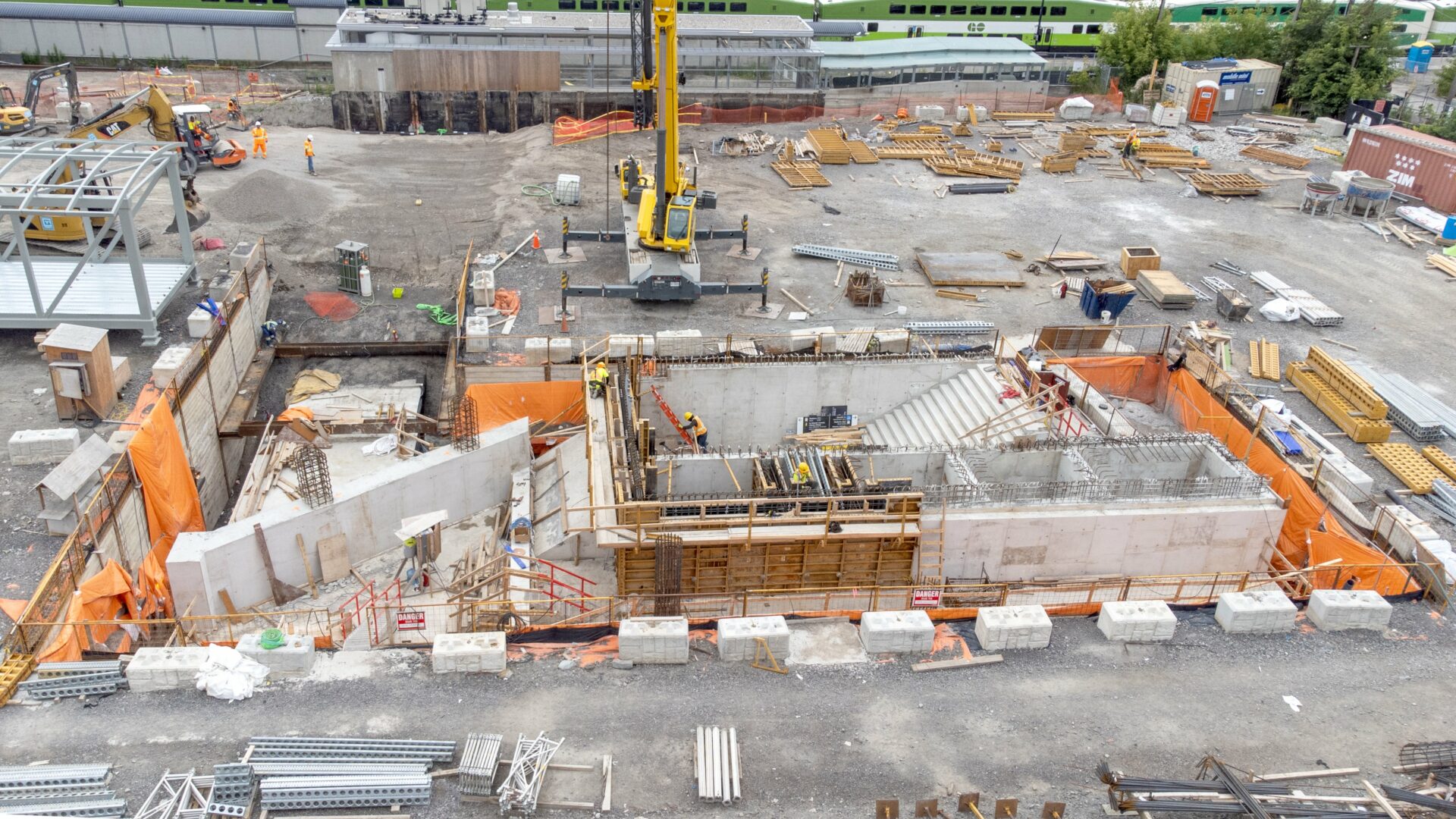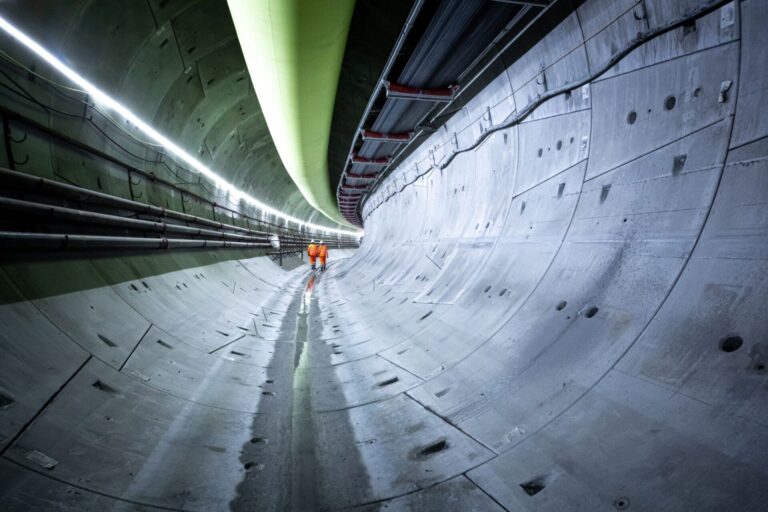Canada’s construction sector experienced a slight contraction in 2023, as growth in the non-residential sector was offset by a moderate decline in activity in the residential sector. Despite this trend, the industry continues to perform at an elevated level, and is poised to grow through 2033, according to BuildForce Canada’s latest national forecast.
The report, 2024-2033 Construction and Maintenance Looking Foward, finds that activity in the residential and non-residential sectors will chart different courses across the short term. The country’s residential sector, which peaked in 2021 under historically low interest-rate conditions, will contract again in 2024 before experiencing an upward trend between 2025 and 2029 and then stabilize toward the end of the forecast period. The initial period of growth is driven by a rebound in the new-housing component, which is followed in the later years by strong demand for renovation activity. These trends combine to increase employment to a peak of six per cent above 2023 levels in 2028. Contractions in later years leave employment two per cent above 2023 levels by 2033.
Activity in the non-residential sector is projected to remain strong across the forecast period, given the high volume of large projects planned and underway in most regions of the country. Engineering construction demands are projected to cycle lower in the short term before rebounding in middle years, in line with the schedule of planned transit projects in Ontario and British Columbia, as well as utility projects in New Brunswick, Nova Scotia, and British Columbia.
Meanwhile, investment in industrial, commercial, and institutional building projects is anticipated to see a steady upward curve through the decade. Demand is created by high levels of investment in the construction of institutional and government buildings, and by a rebound in commercial building construction as the economy returns to growth. Non-residential employment is projected to grow almost continuously across the forecast period, reaching a peak of seven per cent above 2023 levels by 2033.
These numbers are based on existing known demands and do not take into account public-sector initiatives to address housing affordability challenges, nor the anticipated increase in demand for construction services related to the retrofit of existing residential, industrial, commercial, and institutional buildings to accommodate the electrification of the economy. Both scenarios are addressed in separate reports to be released by BuildForce at a later date.
“Construction is a key contributor to Canada’s gross domestic product, and an employer of approximately one out of every 13 working Canadians. Employment has increased by about 80 per cent since 2002, and now counts about 1.5 million people,” says Sean Strickland, chair of BuildForce Canada. “With further growth projected across the forecast period, the challenge before our sector is how to manage labour force pressures.”
Although labour market conditions eased in many provinces in 2023, pressures were alleviated most in the residential sector. Non-residential market conditions remained challenging in Prince Edward Island, Nova Scotia, Ontario, Quebec, Manitoba, and British Columbia.
“Market pressures may be easing in the residential sectors of many provinces in the short term, but even this relief may be short lived,” says Bill Ferreira, executive director of BuildForce Canada. “Our outlook calls for growth to return in the residential sector in 2025 and through the middle years of the forecast in many regions. Coupled with the strong outlook for non-residential construction, labour market challenges are likely to persist throughout much of the forecast period.”
Growth forecast across most provinces into the late 2020s
Construction activity was mixed across the Atlantic provinces in 2023. Gains in the non-residential sectors in New Brunswick and Newfoundland and Labrador offset residential-sector contractions created by rising interest rates. In Prince Edward Island and Nova Scotia, however, residential contractions slightly surpassed non-residential gains.
The outlook calls for the provinces’ respective residential sectors to either contract or record very small gains in the near term, before returning to growth between 2025 and 2028. Prince Edward Island in particular is expected to report significant gains across this period. Renovation investment levels are also projected to increase.
Activity in the provinces’ respective non-residential sectors will fluctuate in line with various large-scale projects such as the refurbishment of the Mactaquac Dam in New Brunswick, a major hydrogen project and the Bay du Nord project in Newfoundland and Labrador, and a number of civil and health care projects. New Brunswick, Nova Scotia, and Newfoundland and Labrador are all expected to report employment growth across the forecast period.
Construction activity in Quebec is expected to generally decline across the forecast period, with the residential and non-residential sectors charting different courses. The former will see activity stabilize as strong growth in residential renovations offsets contractions in new housing. The non-residential sector is projected to rise to a peak in 2024 before experiencing moderate reductions to 2030 as currently known major healthcare, education, transit, manufacturing, and utilities projects are completed.
Ontario’s construction sector experienced a marginal decline in 2023 and is projected to do so again in 2024 as its residential sector recedes from recent highs. The contractions are short lived, however, as the sector returns to growth between 2025 and 2028, and remains high through 2033. The non-residential sector continues to be driven by a large inventory of major infrastructure projects and a projected recovery in commercial-building construction. These carry through until at least 2029. With employment projected to reach peak levels in the residential and non-residential sectors in 2028 and 2029, many trades and occupations could experience strained conditions.
In Manitoba, construction will be principally driven by activity in the non-residential sector. Growth will be greatest in the construction of industrial, commercial, and institutional buildings, and strong output in engineering construction in later years. Residential sector activity is projected to contract across the forecast period, with losses greatest in the new-housing component.
The outlook for Saskatchewan’s construction sector is dominated by growth in the residential sector, which is projected to strengthen between 2025 and 2028 and remain elevated to 2033. The non-residential sector, however, is projected to see little growth across most of the forecast period, and declines in later years as the current inventory of known projects is completed. A younger demographic is well positioned to replace retiring workers.
Alberta’s residential and non-residential construction sectors are both projected to record growth across the forecast period. Non-residential activity is anticipated to chart a steady trend up to the end of the decade, with growth in the oil and gas sector, as well as in engineering construction and the construction of industrial, commercial, and institutional buildings. Meanwhile, the residential sector is expected to cycle up in the short term before contracting modestly in the long run.
The outlook for British Columbia’s construction sector sees varying trends. Non-residential activity is projected to experience a modest decline in the short term as several major projects reach conclusion or move past peak construction activity levels. Investment is then sustained into 2026 before work begins on a number of major engineering construction projects that carry through to 2029. Residential sector activity is expected to remain unchanged in 2024 and 2025 before the market sees a moderate up-cycle to 2029. By 2033, renovation activity is projected to surpass new-housing construction as the key driver of residential demands.
“With many provinces experiencing similar growth patterns across the forecast period, it will be challenging for employers to recruit workers from other regions or other parts of the country to fill labour gaps,” says Warren Douglas, Vice-Chair of BuildForce Canada. “The challenge is compounded by Canada’s aging demographic. It’s not just that more than one-quarter million workers are projected to retire from the construction sector over the forecast period. It’s also that there is a smaller pool of younger workers from which to draw their replacements. This challenge isn’t unique to construction. That means that other sectors will also be competing for the same smaller pool of new workers, thereby intensifying competition.”
Diversification will be key to addressing labour shortages
The development of skilled tradespersons in the construction industry takes years, and often requires participation in a provincial apprenticeship program. Replacing retiring workers typically requires several years of pre-planning to avoid the creation of skills gaps.
By 2033, the industry’s overall hiring requirements are expected to reach 351,800 due to the retirement of approximately 263,400 workers, or 21% of the current labour force, and growth in worker demand of more than 88,000.
Based on historical trends, Canada’s construction industry is expected to draw an estimated 266,300 first-time entrants aged 30 and younger, leaving the industry with a possible retirement-recruitment gap of 85,500 workers. Clearly, an ongoing commitment to apprenticeship development in both compulsory and non-compulsory trades will be necessary to ensure there are sufficient numbers of qualified tradespeople to sustain a skilled labour force over the long term.
“The construction industry remains focused on building a more diverse and inclusive labour force,” says Strickland. “The industry has been working hard to enhance the recruitment of individuals from groups traditionally under-represented in the construction labour force, such as women, Indigenous People, and newcomers to Canada. Creating greater awareness of the tremendous career opportunities for these individuals within the construction sector will be critical to ensuring the sector is able to meet its future workforce needs.”
In 2023, there were approximately 210,800 women employed in Canada’s construction industry. Of them, 28% worked directly in on-site construction. However, as a share of the total 1.18 million tradespeople employed in the industry, women accounted for just 5% of the on-site construction workforce.
The Indigenous population is another under-represented group that presents recruitment opportunities for the construction industry. In 2021, Indigenous People accounted for 5.1% of Canada’s construction labour force, which is a slight decline from the share of 5.2% observed in 2016, but is notably higher than the share of Indigenous workers represented in the overall labour force (4.1%). As the Indigenous population is the fastest growing in Canada and Indigenous workers seem predisposed to the pursuit of careers within the sector, there may be scope to further increase the recruitment of Indigenous People into the construction workforce.
The construction industry may also leverage newcomers over the coming decade to meet anticipated labour market requirements. Based on current trends, Canada is expected to see elevated levels of immigration over the forecast period. This will make newcomers a key contributor to the industry’s labour force. In 2022, newcomers comprised about 19% of the total construction labour force. That figure is notably lower than the 27% share newcomers make up of the overall labour force.
Increasing the participation rate of women, Indigenous People, and newcomers could help Canada’s construction industry address its future labour force needs.
Featured image: According to BuildForce Canada’s latest report, Ontario’s non-residential sector continues to be driven by a large inventory of major infrastructure projects, such as Metrolinx’s Ontario Line. (Metrolinx)











